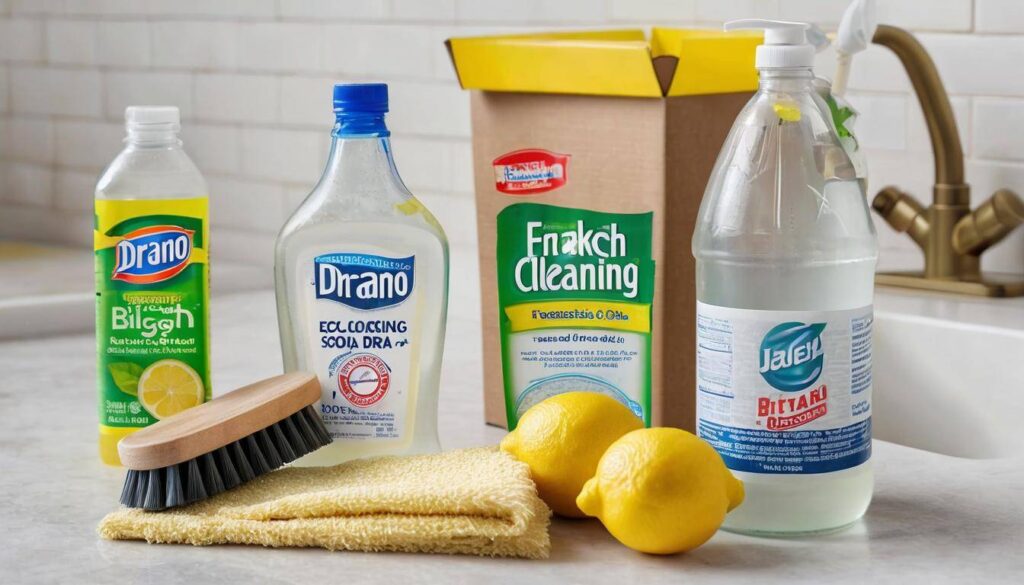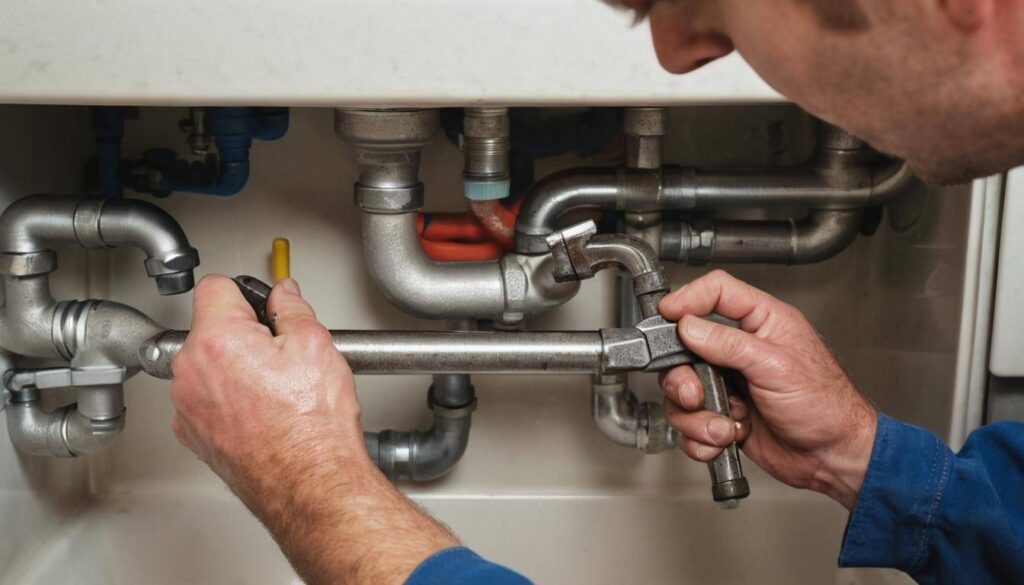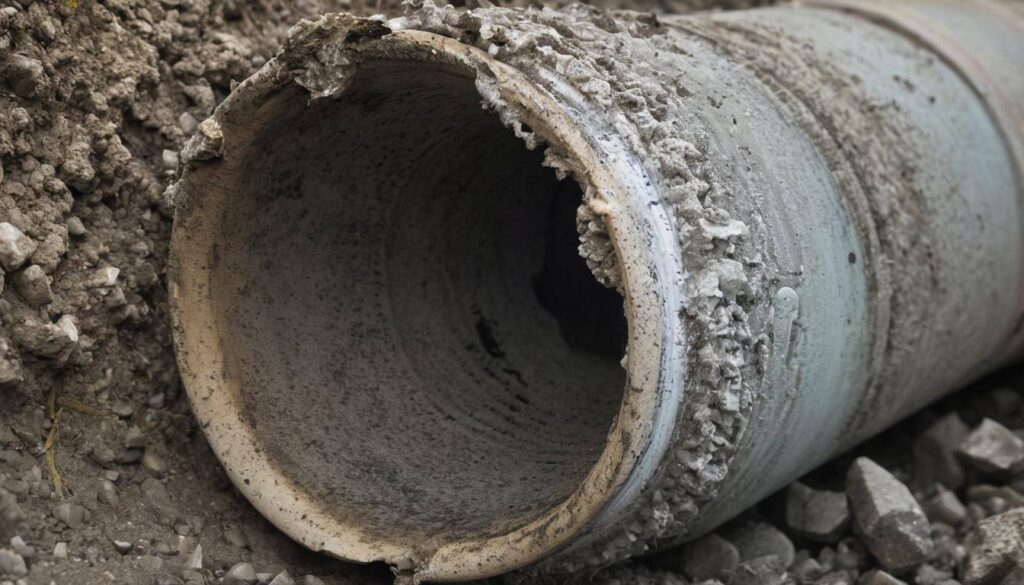Does Homeowners Insurance Cover Emergency Plumbing? Find Out Now
Yes, homeowners insurance often covers sudden and accidental water damage from plumbing issues. These include unpleasant surprises like burst pipes or secret water leaks that can cause havoc in your property. However, not all policies are identical, and the details can vastly differ – some may not cover any plumbing problems at all! Hence, it’s paramount to carefully explore your particular policy, understand what’s covered, and what’s left out of the umbrella of protection. Remember, those fine print under your policy hold important keys to unlocking this puzzle. Your answer to handling emergency plumbing lies there, ready to be discovered.
Yes, in many cases, homeowners insurance does cover emergency plumbing repairs if the damage is sudden and accidental, such as a burst pipe. However, coverage can vary by policy, so it’s important to review your specific insurance plan or consult with your insurance provider for clarification.
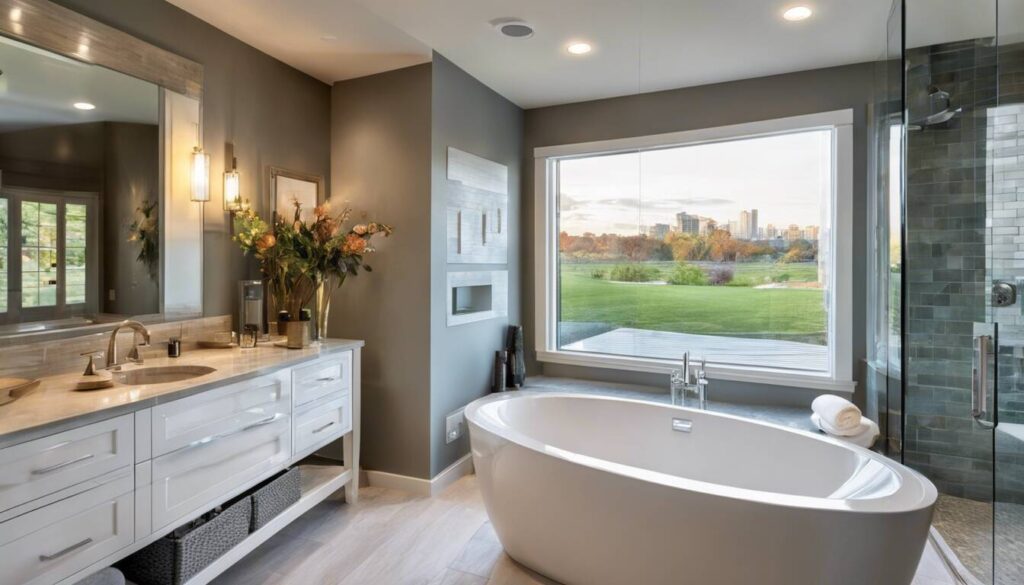
Does Homeowners Insurance Typically Cover Emergency Plumbing?
When it comes to facing plumbing emergencies, such as burst pipes or unexpected water leaks, having a safety net in place can provide much-needed relief. Homeowners insurance typically offers coverage for sudden and accidental water damage resulting from plumbing issues. This coverage extends to bearing the cost of subsequent repairs to the plumbing system.
It’s important to note that while most policies encompass this type of coverage, the extent of the protection can vary. Some policies might cover only the direct damage caused by the plumbing issue, while others may also include coverage for additional expenses related to the repair process, such as accommodations if the home becomes uninhabitable due to the plumbing emergency.
To gain clarity on the specific details of your policy’s coverage for plumbing emergencies, it is crucial to review the policy document provided by your insurance provider. Understanding the fine print and communicating with your insurance agent can help you grasp the depth of your protection and prevent any gaps or surprises in coverage when facing a plumbing crisis.
For instance, a burst pipe resulting in flooding inside your home could lead to both property damage and potential structural risks. The immediate cleanup and restoration activities following such an event could also be covered under certain homeowners insurance policies. However, not all policies will automatically include coverage for temporary accommodations if your home becomes uninhabitable due to a plumbing emergency. It’s important to know where your policy stands on these aspects before an emergency arises.
As we can see, understanding the specifics of your homeowners insurance policy in relation to plumbing emergencies is vital in ensuring comprehensive protection for your home and peace of mind in times of crisis.
Now let’s explore some specific examples of emergency plumbing situations that are typically covered by homeowners insurance.
Definitions and Examples of Emergency Plumbing
Emergency plumbing can be a real headache for a homeowner if they’re not prepared. It refers to sudden, unexpected issues that demand immediate attention, such as burst pipes, sewer line blockages, or water heater malfunctions. These incidents can cause significant damage to your property if not handled promptly.
A burst pipe is a perfect example of an emergency plumbing situation. Just picture water relentlessly gushing out from a broken pipe in your home. Not only does it lead to a waste of water, but it can also result in extensive water damage. Sewer line blockages are equally troublesome, causing sewage backups which are major health hazards and can lead to significant property damage as well. Malfunctions in water heaters can also lead to flooding and severe property damage if left unaddressed.
For instance, imagine coming home to find your basement flooded due to a burst pipe, or dealing with the unpleasantness of a sewage backup in your bathroom, causing major inconvenience and posing serious health risks to you and your family.
In these scenarios, timely action is crucial to minimize the damage caused by such emergencies.
Addressing emergency plumbing is like dealing with a medical emergency. Just like seeking immediate medical help can prevent an ailment from worsening, addressing plumbing emergencies promptly can prevent extensive property damage.
Understanding these definitions and examples allows homeowners to recognize the seriousness of various plumbing issues and act promptly when such emergencies arise.
With a solid grasp of what constitutes emergency plumbing situations, now let’s navigate through the exceptions in coverage for these urgent scenarios.
Exceptions in Coverage for Emergency Plumbing
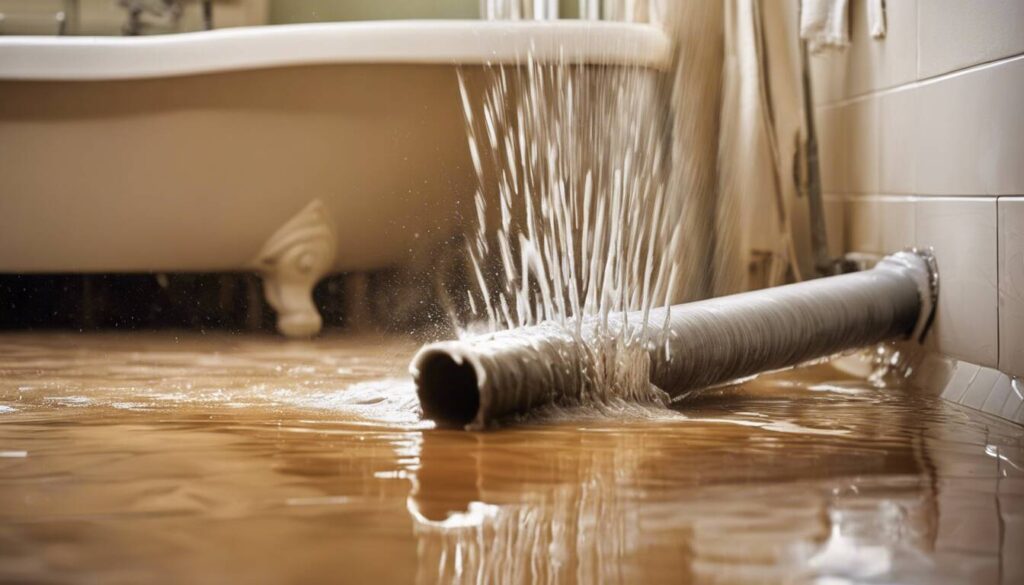
When it comes to homeowners insurance and emergency plumbing, timing is a critical factor. While most policies cover sudden and accidental water damage, they may not extend coverage to damage resulting from lack of maintenance or gradual wear and tear. This means that if a pipe bursts due to aging or untreated maintenance issues, the resulting damage might not be covered by your policy.
It’s essential to inspect your policy documentation or consult your insurance provider to understand the specific limitations regarding gradual wear and tear. Knowing these details will help you make informed decisions about potential home improvement projects or plumbing upgrades.
Furthermore, it’s crucial to note that homeowners insurance policies may exclude coverage for certain types of pipes based on their materials or location within the property. For instance, older properties with specific types of pipes or properties located in areas prone to certain environmental factors might encounter restrictions in coverage.
The exclusion of coverage for certain materials or locations emphasizes the need for proactive assessment and understanding the intricacies of your insurance policy to make informed decisions about preventive measures and potential retrofitting.
For example, homes located in flood-prone areas may have limitations on coverage for damages caused by water infiltration through the foundation, affecting the integrity of plumbing systems. Additionally, properties with outdated plumbing materials such as clay or lead pipes may face challenges in obtaining comprehensive coverage for related damages.
Being aware of these exceptions can guide homeowners in adopting proactive maintenance practices and considering targeted improvements that enhance the resilience of their plumbing systems while mitigating potential vulnerabilities excluded from standard coverage.
Through a proactive approach and sound knowledge of policy inclusions and exclusions, homeowners can effectively safeguard their properties against unforeseen plumbing-related challenges that fall outside standard insurance protection.
Insurance Claims Process for Emergency Plumbing
When an unexpected plumbing emergency strikes, it can be a stressful and overwhelming experience. However, understanding the insurance claims process can help provide clarity and guide homeowners through the necessary steps to ensure a smooth resolution.
The first step in this process is to promptly report the emergency to your insurance company. Contact them as soon as you discover the issue and provide all the necessary details. This includes the date and time of the incident, a detailed description of the problem, and any immediate actions taken to mitigate further damage. Being proactive in reporting the emergency can expedite the claims process and demonstrate your diligence as a policyholder.
For instance, if a burst pipe causes significant water damage to your home, taking quick action to notify your insurance provider can set the wheels in motion for a timely assessment and resolution.
Following the initial report, it’s crucial to document the damage thoroughly. Take photographs or videos of the affected areas and any items that have been impacted by the plumbing emergency. Visual evidence serves as valuable support for your claim and provides the insurance company with a clear understanding of the extent of the damage.
Once you’ve reported the emergency and documented the damage, an adjuster from your insurance company will visit your property to assess the situation. The adjuster’s role is to evaluate the extent of the damage and determine coverage based on the terms outlined in your policy.
During the assessment, it’s important to provide the adjuster with access to all areas affected by the plumbing emergency. Be prepared to answer any questions they may have and offer additional documentation if requested. Transparency and cooperation during this stage can facilitate a fair evaluation and expedite the claims process.
An adjuster’s visit is akin to a thorough inspection, where they carefully examine the impacted areas, evaluate the cause of the plumbing emergency, and assess the resulting damage. Their expertise ensures that policy terms are applied accurately to determine coverage.
For instance, if a malfunctioning sump pump resulted in basement flooding, providing access to the affected area allows the adjuster to assess water damage, structural integrity, and any personal property affected by the event.
Upon completion of the assessment, you’ll receive a determination regarding coverage and next steps. If your claim is approved, homeowners can proceed with necessary repairs by hiring a professional plumbing service to address issues caused by the emergency.
It’s essential to select a reputable and licensed plumbing service that specializes in addressing emergency situations. Engaging qualified professionals ensures that repairs are conducted effectively and in compliance with building codes and safety standards.
In this context, enlisting a reliable local plumbing business can offer homeowners peace of mind during what can be a challenging time. The expertise of reputable professionals can expedite restoration efforts, minimize further damage, and restore essential utilities within homes.
When dealing with an emergency plumbing situation, homeowners can rely on our local plumbing business for prompt and reliable repair services. Our team is equipped with specialized knowledge and tools to address plumbing emergencies efficiently, providing homeowners with expert assistance when they need it most.
Get in touch with our local plumbing business today and ensure that your home is in capable hands during unexpected plumbing emergencies.
Alternatives If Home Insurance Does Not Cover
- Emergency Savings: It’s always wise to have an emergency fund dedicated to unexpected home repairs, including plumbing issues. This fund can cushion the financial impact of sudden leaks or burst pipes, providing peace of mind and practical assistance when needed most.
- Service Line Coverage: Some insurance companies offer optional coverage for underground service lines, such as water and sewer lines. This additional coverage can be included in your existing homeowner’s insurance policy, shielding you from the hefty expenses of repairing or replacing damaged service lines.
- Personal Loans or Financing: When insurance or savings don’t cover emergency plumbing repairs, homeowners can consider securing financing through personal loans or home improvement programs. These alternative financial avenues help spread out the repair costs over a period, making them more manageable in the short term.
Each of these alternatives acts as a safety net for homeowners facing unplanned plumbing issues. Alongside providing financial support, they also offer a reassuring sense of security with readily available resources to tackle unforeseen emergencies.
For example, having a dedicated emergency savings fund can prevent major disruption to household finances during plumbing crises. On the other hand, service line coverage offers comprehensive protection for essential underground utility lines crucial for maintaining the functionality of the home. Additionally, personal loans or financing present flexible options to cover immediate repair costs without causing substantial strain on the budget.
It’s important to assess these alternative solutions based on their specific benefits and limitations and choose the one that aligns best with your financial situation and overall risk tolerance.
By considering these alternatives alongside your homeowner’s insurance, you can establish a robust strategy for dealing with potential emergency plumbing scenarios while safeguarding your home and finances from unforeseen setbacks.
With a solid understanding of how to navigate emergency plumbing situations beyond traditional insurance coverage, let’s now explore another layer of protection through “Home Warranty Coverage for Emergency Plumbing”.
Home Warranty Coverage for Emergency Plumbing
When it comes to managing the risk of unexpected plumbing emergencies, home warranty coverage can be a valuable addition to your homeowner’s insurance. While homeowner’s insurance typically covers damages caused by sudden and accidental plumbing issues, it may not cover the cost of repairing or replacing the actual components of the plumbing system. This is where a home warranty can step in to provide an extra layer of financial protection by offering repairs or replacements for certain plumbing system components.
Home Warranties Explained
Home warranties are service contracts that cover the repair or replacement of major home systems and appliances due to normal wear and tear. They are designed to fill in the gaps left by traditional homeowner’s insurance policies. In the case of a plumbing emergency, such as a burst pipe or a water heater failure, a home warranty could potentially save you from having to bear the full financial burden of the repair or replacement costs.
Example of Coverage
For instance, if your water heater suddenly stops functioning properly, a home warranty could help cover the cost of diagnosing the issue, repairing the water heater, or even replacing it if necessary. This kind of coverage can offer peace of mind knowing that you have a plan in place to address unforeseen plumbing problems without draining your savings.
It’s important to note that not all home warranty plans are created equal—coverage options and limitations can vary widely between providers. Before purchasing a home warranty for plumbing coverage, it’s crucial to thoroughly review the terms and conditions of the policy to understand what is included and excluded from coverage.
Finding Suitable Coverage
Consider exploring different home warranty providers and comparing their plans to ensure you find one that aligns with your specific needs. Some comprehensive plans may offer coverage for a wide range of plumbing components, including faucets, toilets, water heaters, sump pumps, garbage disposals, and more.
By complementing your homeowner’s insurance with a suitable home warranty plan, you can enhance your overall protection against unexpected plumbing emergencies while potentially saving on costly repair or replacement expenses.
In this way, taking proactive steps like considering additional home warranty coverage can provide invaluable support in handling unexpected plumbing emergencies while safeguarding your finances.

